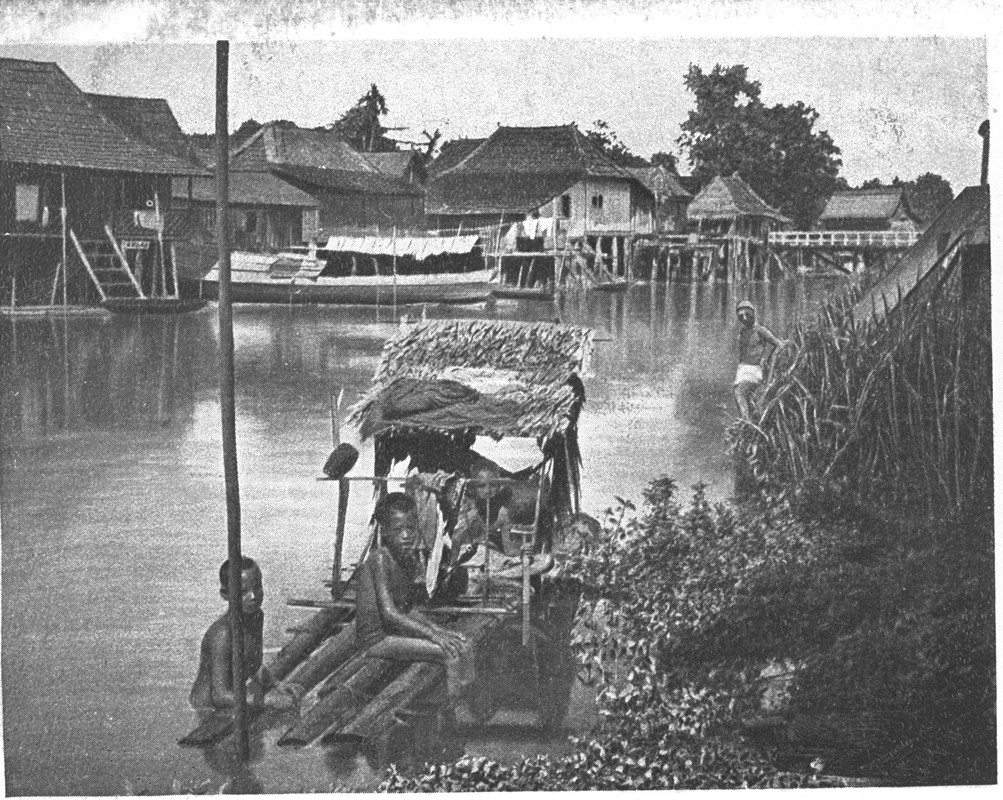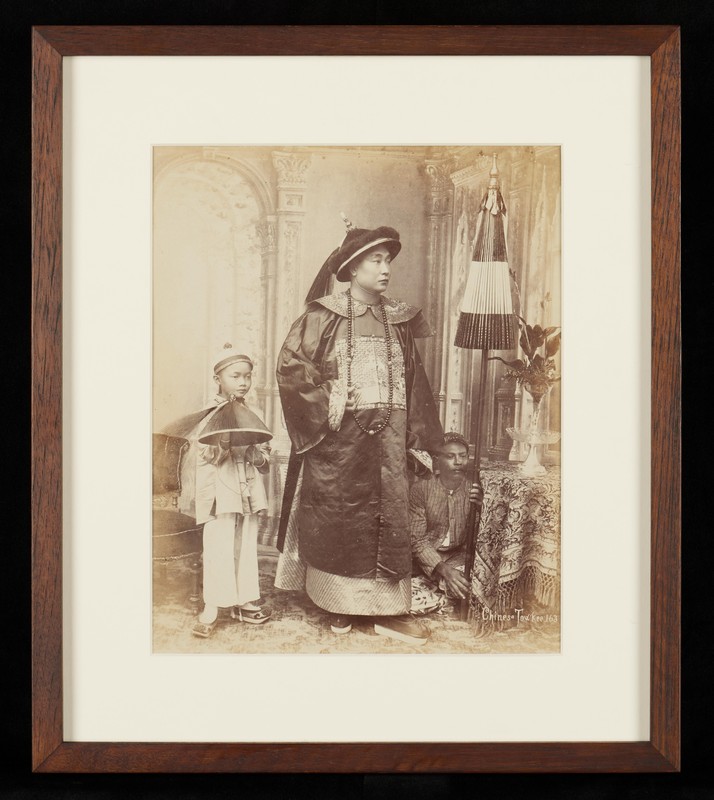Singapore Chinese Chamber of Commerce & Industry and “Chinese entrepreneurial spirit”
Since its establishment in 1906, the Singapore Chinese Chamber of Commerce & Industry (SCCCI) has been the apex body of Singapore’s Chinese business community. Before World War II, it played a vital role in unifying dialect groups, opening up business opportunities, and speaking up for the people. After Singapore gained independence, SCCCI leaned heavily into its role of promoting the development of commerce in Singapore, and its influence continues to this day.
Over the past century, the Chamber has always adhered to the “Chinese entrepreneurial spirit”, contributing in the areas of politics, economy, education and culture in Singapore. In 2017, SCCCI’s 59th Council emphasised this “Chinese entrepreneurial spirit” as the cornerstone of its development.1It identified “integrity, loyalty, giving back, and innovation” as core values underpinning this.2
The installation of the 61st Council of SCCCI was held in March 2022. Building on the “Chinese entrepreneurial spirit”, it used 10 Chinese characters to sum up the organisation’s core values: “patriotism”, “integrity”, “legacy”, “innovation” and “uniting businesses”.3 That same year, when SCCCI held an opening ceremony for a newly-renovated building, then Prime Minister Lee Hsien Long presented a wooden plaque inscribed with the words “integrity as the foundation”, “loyalty to the nation”, “innovation at the forefront”, and “giving back to the people” — encouraging SCCCI to continue its contributions to society and the country.
Loyalty to the nation
Following its establishment, the SCCCI, representing the business community, spoke up several times against the British colonial government’s intention to implement an income tax. During the Great Depression in the 1930s, SCCCI petitioned the colonial government to set up artisan factories to accommodate the unemployed who had lost their jobs. It also urged the authorities to set up large manufacturing factories to shelter workers with stable jobs, which would benefit the local business community.
After World War II, SCCCI helped businesses report to the colonial government their wartime losses and compensation amounts. It also opposed the rice ration and the new income tax policy, as it wanted the local economy to recover faster. SCCCI led the citizenship movement from 1947 to 1957 — wrestling with the colonial government for citizenship rights for the people, and encouraging local residents to sink their roots in the community.
When Singapore obtained the status of self-governing state in 1959, SCCCI organised a Singapore Constitution Exposition which attracted over 300,000 visitors — making it the largest exposition ever held in South East Asia. This suggested that the local Chinese business community had faith in the SCCCI’s leadership, supported Singapore’s self-governance, and identified with its political position.
After Singapore achieved independence in 1965, SCCCI set up a Singapore Chinese Chamber of Commerce Foundation to award scholarships to students with outstanding grades. SCCCI fully supported the government’s push for industrialization and led the business community in helping the country modernise. SCCCI also organised business missions to encourage members to strengthen their overseas connections and boost international trade. When the government announced the introduction of National Service in 1967, SCCCI offered its full support, helping with publicity and registration. In 1968, the SCCCI helped raise more than $1.23 million for the National Defence Fund for the government.

Giving back to society
In the 1970s, SCCCI worked closely with Singapore government, businesses, and multinationals to bring an end to an unreasonable contract system: through their negotiations, they succeeded in breaking the monopoly that various Western-controlled shipping conferences had over shipping. This led to lower freight rates, and brought benefits to the business community.
In the 1980s, SCCCI — anticipating upcoming trends — started a microcomputer centre. It also set up a training centre offering a variety of courses to people from all walks of life. This was converted into The Singapore Chinese Chamber Institute of Business in the 1990s. SCCCI went on to launch the World Chinese Entrepreneurs Convention and the SME Conference in the 1990s — encouraging the Singapore business community to expand its network globally, and local small and medium-sized enterprises (SMEs) to enter the era of computers and the Internet.
In August 1991, SCCCI organised the inaugural World Chinese Entrepreneurs Convention. The aim was to establish a global business network for Chinese businessmen around the world to strengthen their business ties with each other. Chinese business organisations from around the world take turns to host the convention, which is a biennial event.

In 2004, SCCCI and the Singapore Federation of Chinese Clan Associations jointly established the Chinese Language and Culture Fund to support projects that helped raise the standards of Chinese and promote Chinese culture. In 2006, SCCCI established the Enterprise Development Centre and held the Trade Association Congress for the first time to integrate information from various industries and share resources. In 2007, SCCCI supported the set up of Business China, an organisation initiated by the government, that would further its efforts to cultivate bilingual and bicultural local talent.
Since setting up its first overseas representative office in Shanghai in 2010, SCCCI has gone on to establish a presence in other Chinese cities such as Chongqing, Chengdu and Nanjing — serving as an important bridge between local businesses, governments and overseas markets. In 2017, SCCCI established the Trade Association (TA) Hub, a platform for local businesses in different fields to collaborate and work to transform themselves. During the COVID-19 pandemic, SCCCI worked closely with the government to support the needy through donations and in kind assistance. Furthermore, it has set up a Singapore Import Pavilion in Shanghai to help members expand their business.

SCCCI has been keeping pace with the times — be it through the approach it takes with its work plans, or in the way it implements the “Chinese entrepreneurial spirit”. It continues to further its legacy and fulfil its mission and vision.
This is an edited and translated version of 新加坡中华总商会的“华商精神”. Click here to read original piece.
| 1 | Chia Yei Yei, “Xin huizhang Huang Shanzhong: Huashang jingshen shi zhonghuazongshanghui fazhan jishi” [New president Roland Ng: The Chinese entrepreneurial spirit is the cornerstone of SCCCI’s development], Lianhe Zaobao, 18 July 2017. |
| 2 | Oh Kiat Muay, “Huang Shanzhong: Zhiding shumahua jihua, zhonghuazongshanghui zhu qiye kaituo shangji” [Roland Ng: With a digital strategy, SCCCI helps businesses unlock business opportunities], Lianhe Zaobao, 9 August 2018. |
| 3 | Kho Choon Keng, “Zhanzheng de shenke qifa: aiguo” [War inspired patriotism], Lianhe Zaobao, 21 April 2022. |
Lee, Peng Shu. Xinjiapo zhonghua zong shanghui de juese yu gongneng yanjiu, 1906–1942 [The Role and social function of Singapore Chinese Chamber of Commerce, 1906–1942]. PhD thesis. Xiamen: Xiamen University, 2010. | |
Tan, Teng Phee, ed. The Unwavering Force of the Chinese Entrepreneurial: A Centennial History of the Singapore Chinese Chamber of Commerce & Industry. Singapore: Singapore Chinese Chamber of Commerce & Industry, 2022. | |
Zhou, Zhaocheng. Elements of Enterprise: 100 Years of the Singapore Chinese Chamber of Commerce & Industry. Singapore: Singapore Chinese Chamber of Commerce & Industry: SNP International Publishing Pte Ltd, 2006. | |
Hu, Fiona Ai Lan. “Singapore Chinese Chamber of Commerce & Industry Inextricably Linked to Singapore’s Economic Miracle”. In 50 years of the Chinese community in Singapore, edited by Pang Cheng Lian, 3–28. Singapore: World Scientific Publishing Co. Pte Ltd., 2016. | |
Visscher, Sikko. The Business of Politics and Ethnicity: A History of the Singapore Chinese Chamber of Commerce and Industry. Singapore: NUS Press Singapore, 2007. |










